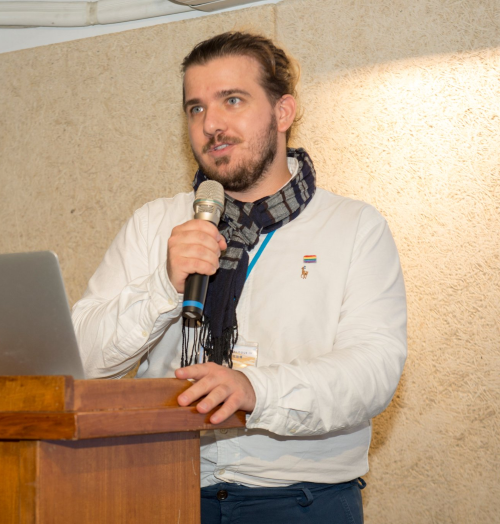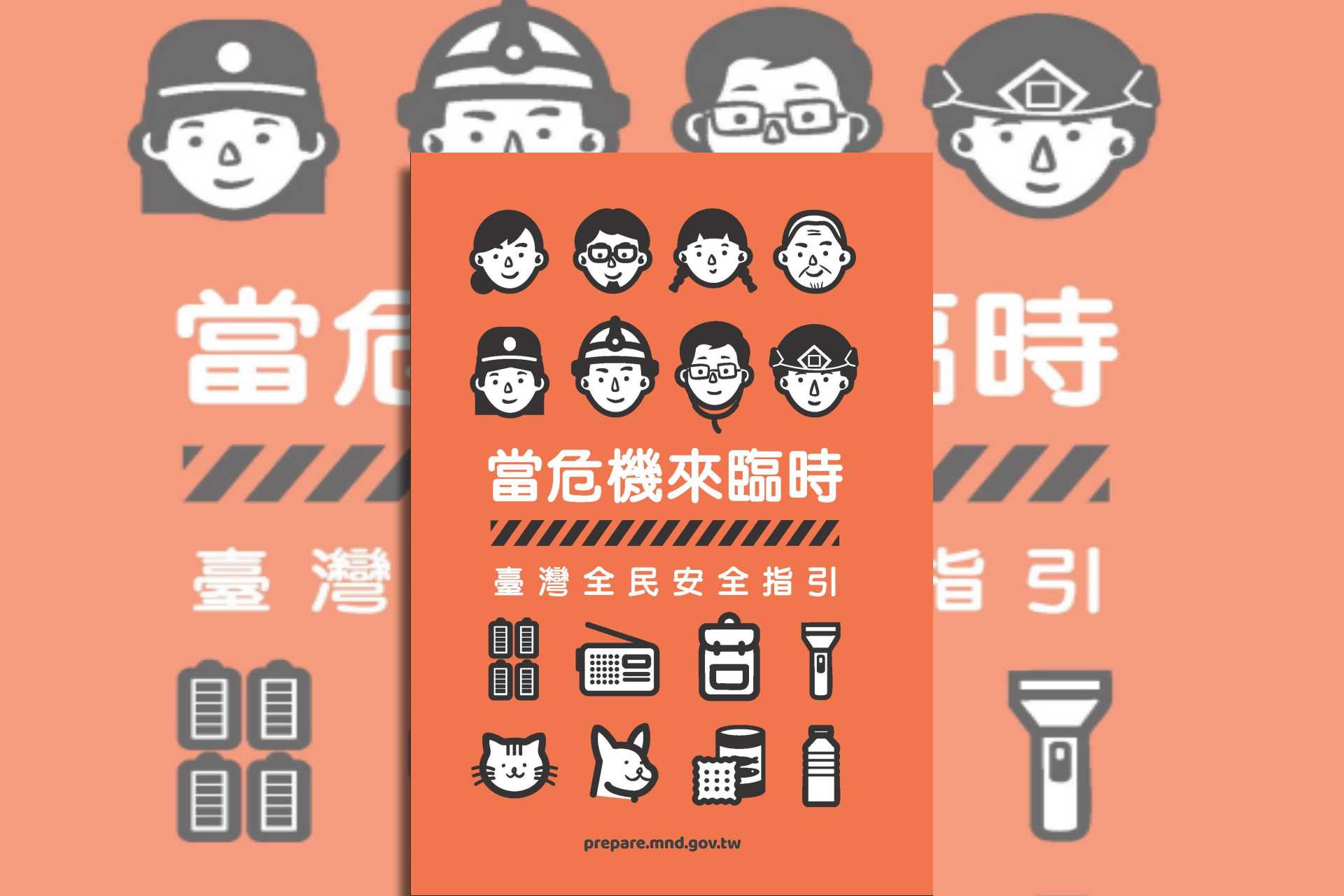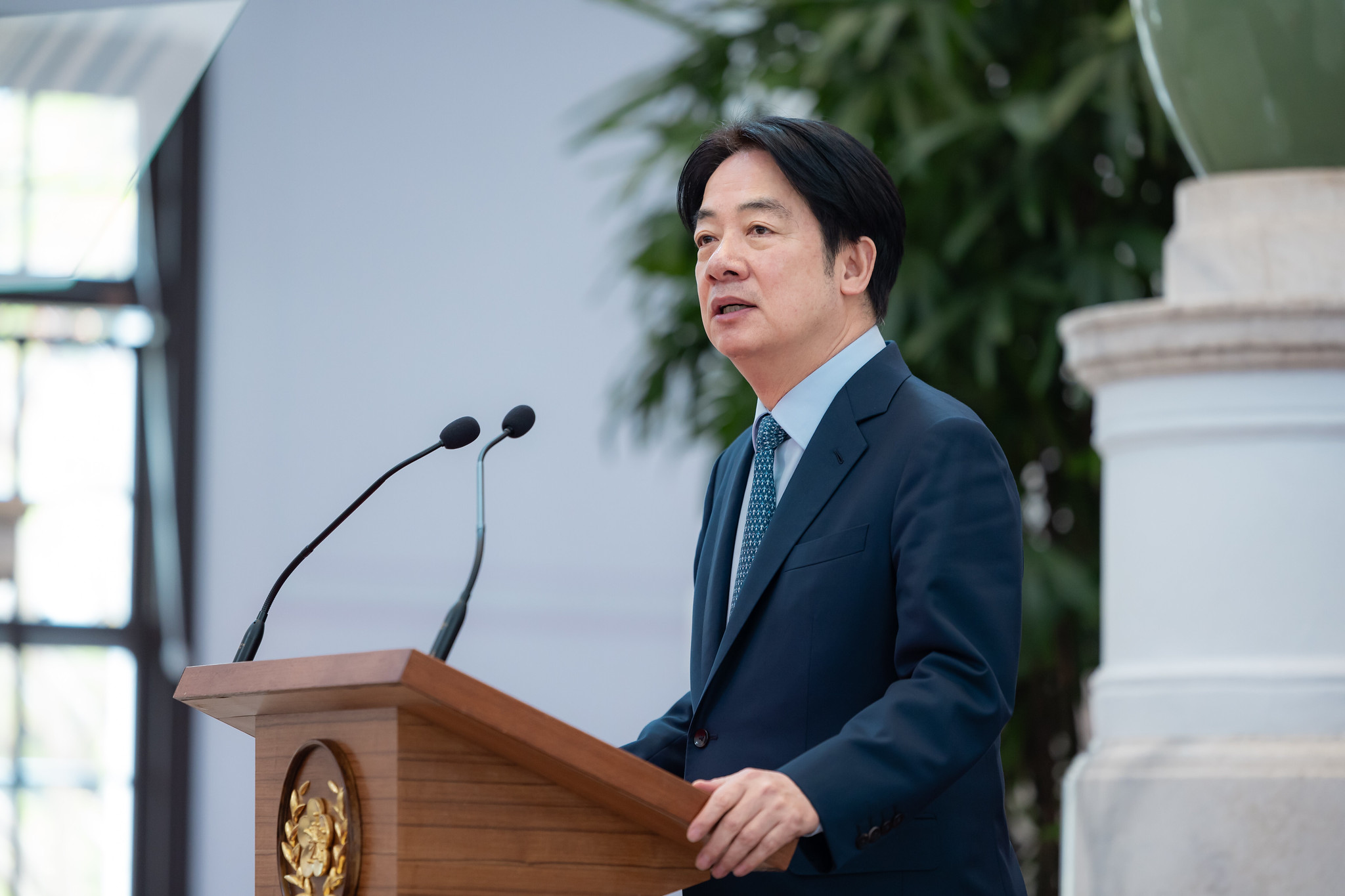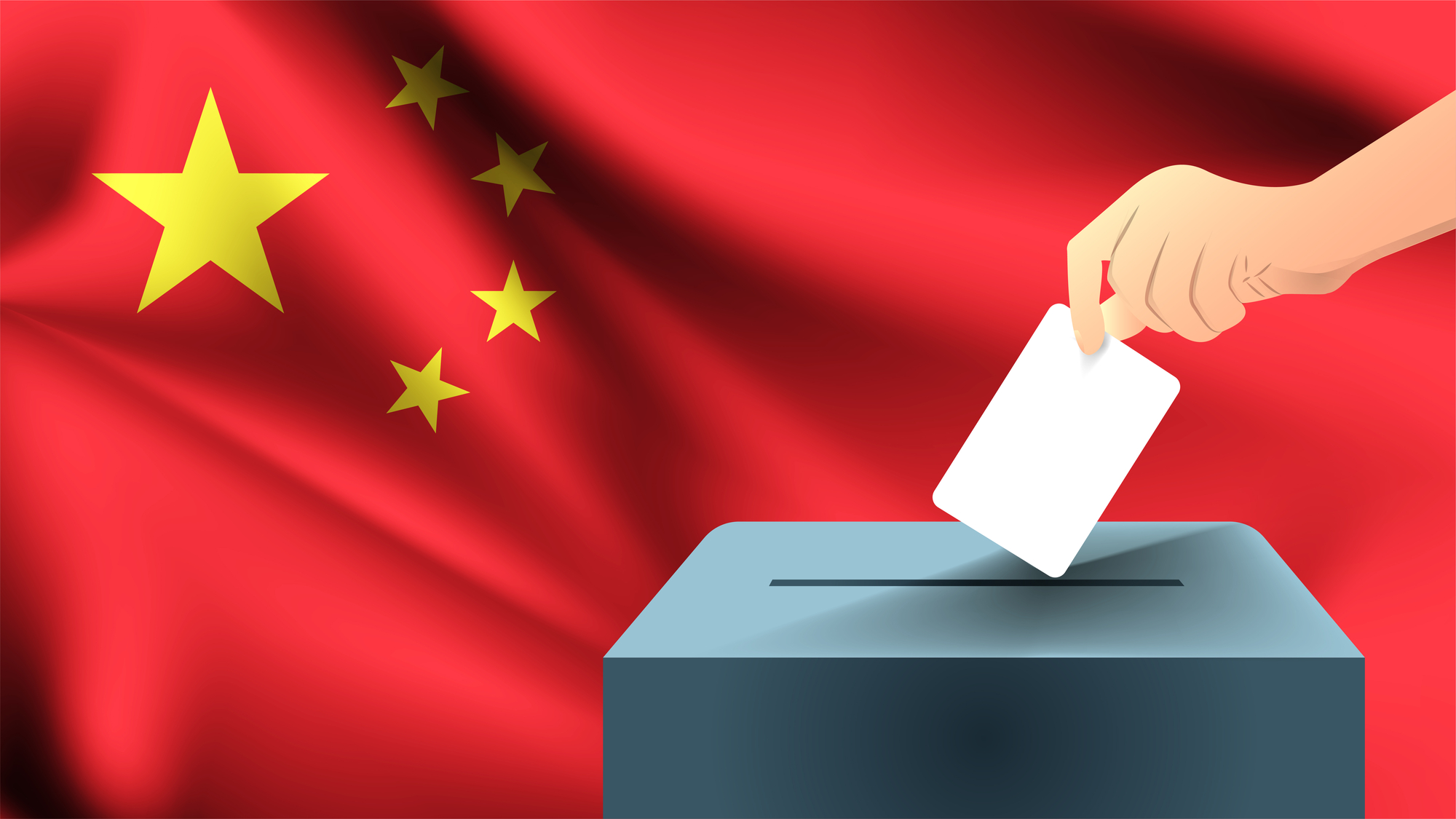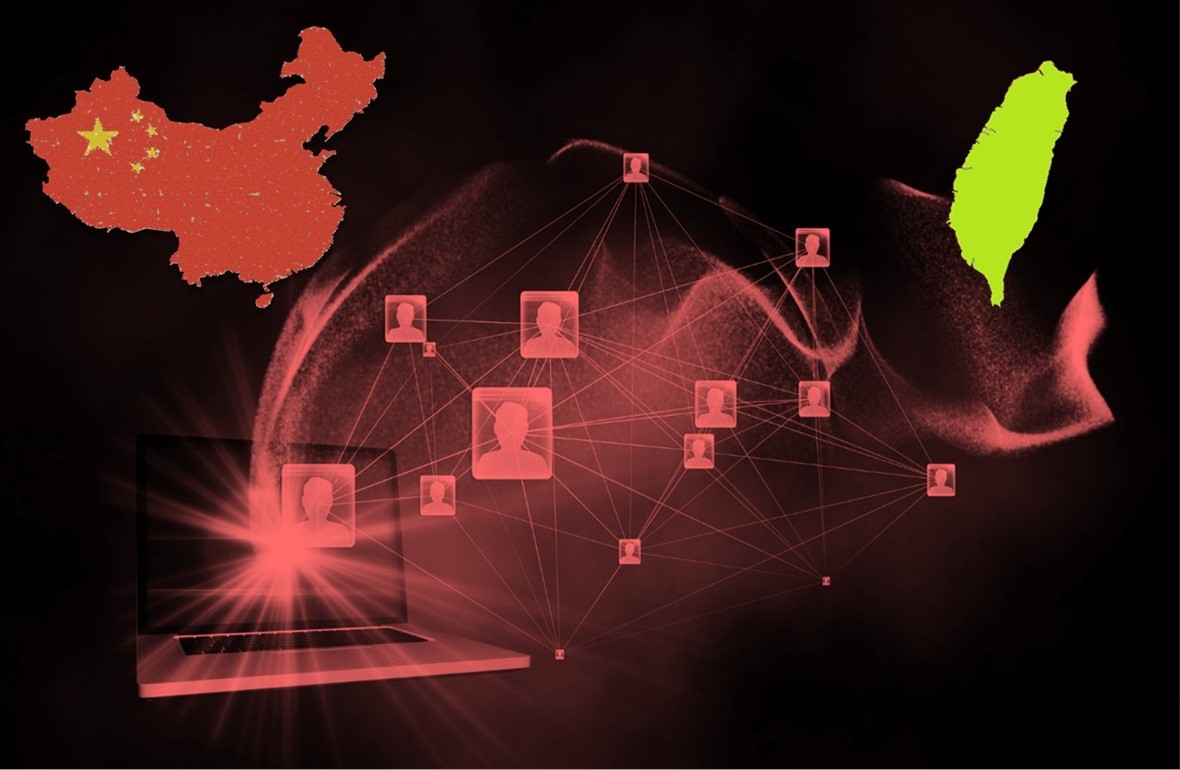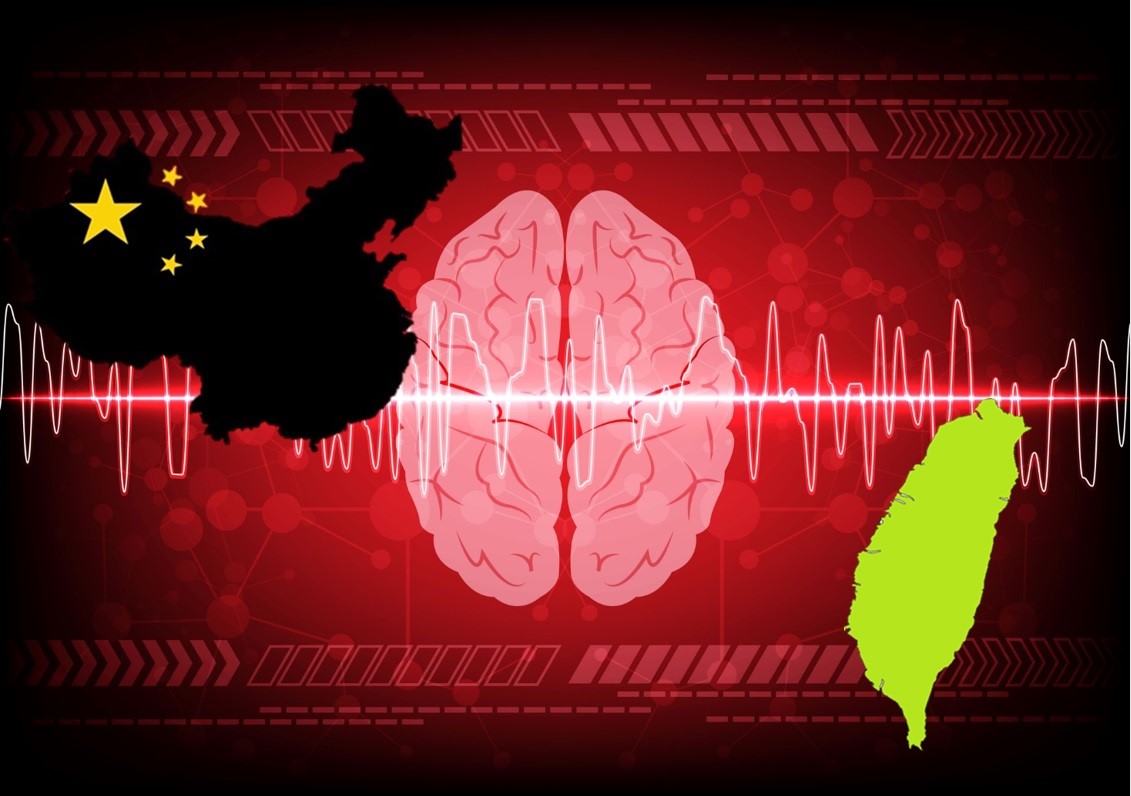Taiwan’s 2025 Civil Defense Handbook and the Challenges of Whole-of-Society Resilience
The 2025 edition of Taiwan’s civil defense handbook represents a marked evolution in both substance and presentation, as the government seeks to recalibrate its crisis communications with the public in light of shifting security challenges and lessons from global crises. Among its most significant advancements is the explicit integration of cognitive warfare and disinformation defense. Picture source: All-out Defense Mobilization Agency, September 19, 2025, All-out Defense Mobilization Agency, https://adma.mnd.gov.tw/.
Taiwan’s 2025 Civil Defense Handbook and the Challenges of Whole-of-Society Resilience
By Marcin Mateusz Jerzewski
In September 2025, Taiwan’s Ministry of National Defense released the third edition of its civil defense safety handbook. Since its initial 2022 iteration, the handbook has evolved from a document aimed at helping local governments draft their own guides, to the expanded 2023 “All-out Defense Contingency Handbook” focused on improving citizens’ emergency response in war and major crises, and, finally, the 2025 edition which further shifted toward promoting the “preparation ensures safety” mindset and strengthening whole-of-society resilience, self-help, mutual aid, and a firm resolve to defend the country.
The updates to the handbook reflect the William Lai administration’s commitment to scaling up civilian involvement in defense. Building upon the Overall Defense Concept developed under Tsai Ing-wen’s presidency, the current Lai administration has considerably elevated the importance of civil resilience, with the President personally assuming leadership of the Whole-of-Society Defense Resilience Committee. Taiwan’s 2025 Quadrennial Defense Review (QDR) also included the Lai administration’s distinctive emphasis on “whole-of-society resilience” while upholding the core strategy of “resolute defense and multi-domain deterrence.” This signals Lai’s view that, in any confrontation with China, virtually all dimensions of Taiwanese life — information space included — would come under pressure or attack, including through sustained disinformation campaigns.
Yet while whole-of-society resilience has emerged as a leitmotif in the administration’s security and defense narrative, its implementation still faces obstacles related to inter-agency coordination, domestic political competition, and strategic communications. An assessment of the latest civil defense handbook thus provides a helpful entry point for evaluating Taiwan’s emerging whole-of-society resilience ecosystem — and, by extension, its capacity to respond to China’s growing belligerence under the premise that resilience amplifies deterrence and makes Taiwan a less attractive target.
A Closer Look at the 2025 All-Out Defense Handbook
The 2025 edition of Taiwan’s civil defense handbook represents a marked evolution in both substance and presentation, as the government seeks to recalibrate its crisis communications with the public in light of shifting security challenges and lessons from global crises. Among its most significant advancements is the explicit integration of cognitive warfare and disinformation defense.
The handbook’s declaration — “any message claiming that Taiwan has surrendered should be considered false” — is more than just a warning. It highlights the importance of building “social immunity,” directly addressing how information operations may precede or accompany kinetic attacks. It is particularly relevant in the case of Taiwan, which faces the threat of political warfare from the People’s Liberation Army — not traditional armed forces of the state, but rather an armed wing of China’s monopolistic authoritarian ruling party. By preemptively inoculating the public against such narratives, Taiwan is also seeking to align its civil defense approach with those of leading democracies facing similar hybrid threats, including Finland and Lithuania.
Another noteworthy improvement is the handbook’s accessible, user-oriented design. Moving away from purely militaristic tones and jargon, the new edition features approachable language, illustrations, and practical checklists. This “de-militarization” of preparedness makes guidance on self-help, mutual aid, and crisis response more relatable and actionable for ordinary citizens — including children, the elderly, and non-native speakers — thus potentially broadening societal buy-in.
Nevertheless, shortcomings remain. First, there are persistent gaps between guidance and reality, especially concerning critical infrastructure. Civil defense shelters and resource distribution centers remain inconsistently marked, maintained, or inaccessible, thereby diminishing the handbook’s practical impact. Second, the publication extends the recommended self-reliance window from the previous three days to one week, but experts caution that this is still insufficient. In a severe blockade or conflict scenario, true resilience would require citizens to be prepared for several weeks or even months without outside aid. Finally, the 2025 edition is critiqued for its softened portrayal of direct military threats. By focusing on blockades and cyberattacks while downplaying scenarios like bombardment or invasion, it risks failing to adequately prepare the public for the psychological and physical realities of full-scale conflict.
Challenges to Building Whole-of-Society Resilience in Taiwan
The weaknesses of the 2025 All-Out Defense Handbook mirror deeper obstacles in Taiwan’s efforts to boost whole-of-society resilience. On paper, the QDR and new Whole-of-Society Defense Resilience Committee sketch an ambitious architecture of inter-agency coordination, linking central ministries, local governments, and critical infrastructure. In practice, the handbook’s tenuous connection to real-world infrastructure — confusing or unusable shelters, vague links to resource distribution points, and limited guidance on long-term disruption — suggests that central design still struggles to translate into local, actionable arrangements.
Domestic politics further complicate implementation. For the Democratic Progressive Party, whole-of-society resilience is framed as a necessary response to gray-zone coercion and invasion risk. Chinese Nationalist Party (KMT) voices, by contrast, have warned against “militarizing” everyday life and stoking public anxiety, especially around civil defense legislation and school-based preparedness. This contestation creates strong incentives to soften public-facing materials: the 2025 handbook’s friendly visual language, focus on blockades and cyberattacks, and downplaying of bombardment or occupation scenarios can be read as a compromise between honest threat communication and fears of a political backlash.
At the core lies the question of public trust. Resilience strategies in Finland and other benchmarks rest on a high degree of confidence that the government will be transparent about risks and competent in crisis. Taiwan’s experience with COVID-19 shows the power of such trust, but growing partisan polarization now shapes how messages on China and defense are received. The handbook’s mix of innovation (e.g., the “surrender messages are false” line) and arguably excessive caution (short self-reliance horizon, muted war imagery) encapsulates these unresolved tensions in Taiwan’s emerging whole-of-society resilience ecosystem.
European Porcupines: Opportunities for Collaboration in Resilience Building
Both the QDR and recent resilience reports stress that Taiwan’s whole-of-society resilience will depend not only on domestic reform, but also on learning from like-minded partners. Nordic and Baltic states are a natural fit. Finland’s “comprehensive security” model and Lithuania’s experience with Russian and Chinese hybrid threats already inform policy debates in Taipei.
The Global Cooperation and Training Framework (GCTF) offers a ready-made vehicle to deepen these links. Established by Taiwan and the United States — now joined by Australia, Canada, Japan, and the United Kingdom — it has experimented with franchise workshops in partner countries on topics such as supply-chain resilience, media literacy, and humanitarian assistance and disaster response. Although neither the EU nor its member states are formal partners, they can still sponsor or co-host themed franchise events focused on whole-of-society resilience.
Beyond the GCTF, joint dialogues with Finland, Sweden, and Lithuania on continuity of government, critical infrastructure protection, and civil defense mobilization could help Taiwan refine its own planning. Reciprocal expert secondments and institutional twinning — for example, hosting European experts within Taiwan’s Whole-of-Society Defense Resilience Committee and embedding them in Taiwanese resilience structures — would further facilitate the co-design of resilience audits, legal frameworks, and public communication strategies.
Taken together, Taiwan’s evolving civil defense handbook, the Lai administration’s emphasis on whole-of-society resilience, and emerging partnerships with European “porcupines” point toward a more integrated approach to national security. Turning this agenda into reality will require sustained political will, honest communication with the public, and structured cooperation with like-minded democracies. If Taipei can align these elements, resilience will not only mitigate the costs of crisis, but also strengthen deterrence by making Taiwan a far more difficult target to coerce or defeat.
(Marcin Mateusz Jerzewski is Head at the Taipei Office of the European Values Center for Security Policy.)

